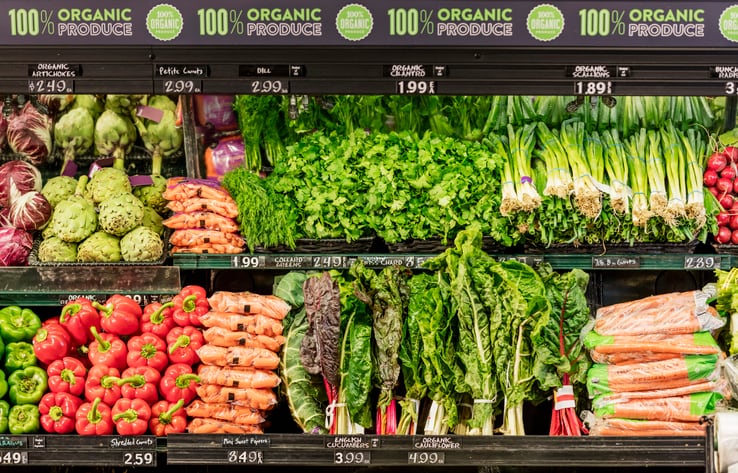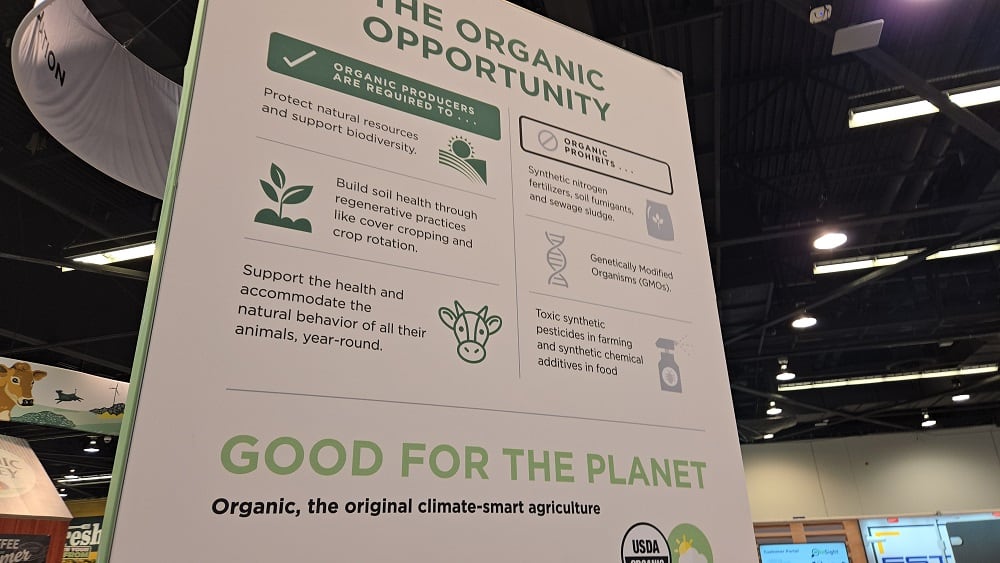USDA’s deregulation efforts under the Trump administration could inadvertently increase red tape and reduce market access for the organic industry if it rescinds the recently finalized Market Development Rule for organic pet food and mushrooms as proposed earlier this month.
The unilateral move by the agency on May 12 also undermines the unique industry-agency partnership on which USDA Organic certification is based, argue organic leaders.
If USDA and the organic industry can restore and maintain their longstanding collaborative process on which the industry relies, organic leaders say there are significant opportunities for both sides to advance shared values espoused by the Make America Healthy Again movement.
Unilateral deregulation would ‘reverse more than 15 years of stakeholder engagement’
Within days of returning to the White House, President Donald Trump signed an executive order to “unleash prosperity through deregulation,” including a requirement that “whenever an agency promulgates a new rule, regulation or guidance, it must identify at least 10 existing rules, regulations or guidance documents to be repealed.”
Ostensibly in the spirit of this directive, USDA last week proposed rescinding the “National Organic Program; Market Development for Mushrooms and Pet Food,” which would “reverse more than 15 years of stakeholder engagement, National Organic Standards Board recommendations and industry development,” according to the Organic Trade Association.
“Our concerns here are they did not consult with the National Organic Standards Board before taking this action,” OTA Co-CEO Tom Chapman said. “If they had, they would have heard that trade wanted these rules and they were deregulatory, and so they actually aligned with the priorities of this administration.”
He explained that not all regulations are the same and that the pet food and mushroom regulations are “unique” in that they are deregulatory.
For example, he explained, the 2024 final rule currently threatened by USDA would allow for organic animal byproducts in pet food and would allow for the essential amino acid taurine, needed by cats, to be in pet food labeled as organic.
“The rule de-restricted the materials. Basically it was deregulatory action,” said Chapman.
The change would have provided clear standards for organic players to access a currently underserved market.
According to OTA, the pet food industry uses 6.4 million tons of animal byproducts annually, which is worth $8.5 billion. Without the regulatory framework and changes in the final rule, organic producers were at risk of not accessing this market entirely.
This change would have a knock-on effect for the organic meat market, which is growing but which also faces headwinds because of the cost of processing and producing organic meat, said Chapman. He explained, “Part of that is the fact the byproducts don’t have a value-added market that can get that organic seal” and potentially command a higher price point.
OTA argues mushroom producers “face similar challenges” and needed a clear framework so US producers could better compete with Canada where organic mushroom standards are in place already.
Based on this, Chapman cautioned, “deregulation, if not done carefully, can inadvertently create more burden.”
‘USDA really throws into question how organic rules will be changed in the future’
The potential impact of USDA’s unilateral move goes beyond the mushroom, animal protein and mushroom industries – it strikes at the very heart of the organic industry’s oversight and threatens to erode the seal’s authority.
“By taking these actions, USDA really throws into question how organic rules will be changed in the future and if they will enjoy the transparent and community consulted process that has been used historically,” Chapman said.
He explained that the organic industry is unique in that it proactively pursued regulatory oversight to establish clear standards that define and differentiate organic products from conventional options so that both businesses and consumers could trust the marketplace.
This resulted in a unique public-private partnership in which farmers, scientists, environmentalists and other industry stakeholders who sit on the National Organic Standards Board, make recommendations, including regulatory proposals, to the National Organic Program, which is the regulatory body responsible for developing and enforcing national organic standards. USDA oversees and houses the NOP, which typically follows a formal approval process with public comment for regulatory changes.
And yet, the NOP and NOSB “still exist within this regulatory framework that is constantly questioning: Do you need a regulation here? Do you need a regulation there?” said Chapman.
The result is a tug-of-war that can upset the delicate balance between USDA, NOP, NOSB and the broader organic industry and result in disagreements. Indeed, this is not the first time USDA has acted alone or in direct contradiction of the industry’s desires.
In 2018, under the Trump administration’s first term, USDA decided to allow carrageenan in organic products despite a recommendation by NOSB to prohibit it. The USDA’s decision then, as now, to ignore NOSB’s recommendation raised “serious concerns about the future of the organic label.”
Whether the current move by USDA portends a disintegration of the industry and agency’s relationship under the current Trump administration is unclear.
“It is hard to come out with a full analysis of what this means for the next three years,” said Chapman. “Frankly, many of the political leadership within the USDA is still not in place. We don’t have an under secretary of market and regulatory programs, which is the first senior level person that organic sits underneath. We don’t have a deputy secretary of agriculture, who really directs those undersecretaries and policy settings.”
What the industry does have is secretary of agriculture, White House executive orders and the Department of Government Efficiency teams “trying to achieve these ends, but the right people aren’t in place,” he added. “So, it is a little hard for me to say if this current action is indicative of what the future actions are.”
For now, Chapman said the industry remains eager to work with the Trump administration on where their priorities intersect with those of the organic industry.
“We think there are a lot of them. As we look at the Make America Healthy Again movement, as we look at how government can help businesses grow, as we look at the initiatives to bring more economic resiliency to farmers, we think organic is a voluntary way that fits into all of that – as long as we can communicate successfully with them,” he said.
Stakeholders have until June 11 to comment on USDA’s proposal to rescind this rule.




